High Altitude Pseudo Satellites Market Size
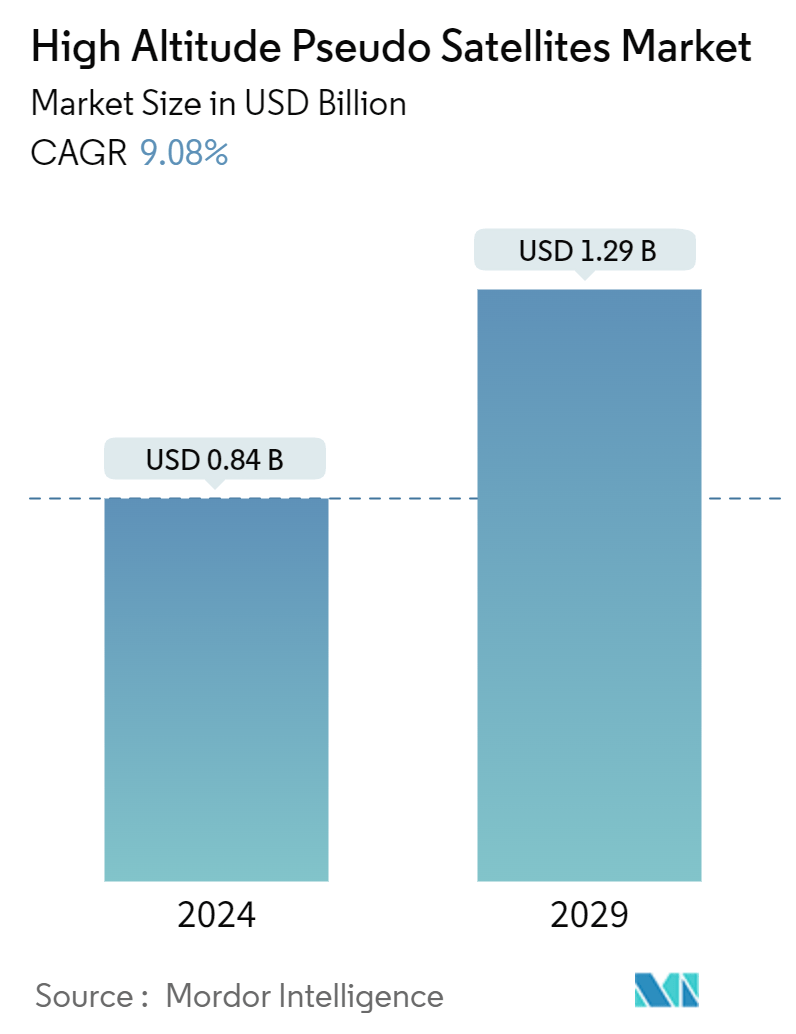
| Study Period | 2019 - 2029 |
| Market Size (2024) | USD 0.84 Billion |
| Market Size (2029) | USD 1.29 Billion |
| CAGR (2024 - 2029) | 9.08 % |
| Fastest Growing Market | Asia Pacific |
| Largest Market | Asia Pacific |
Major Players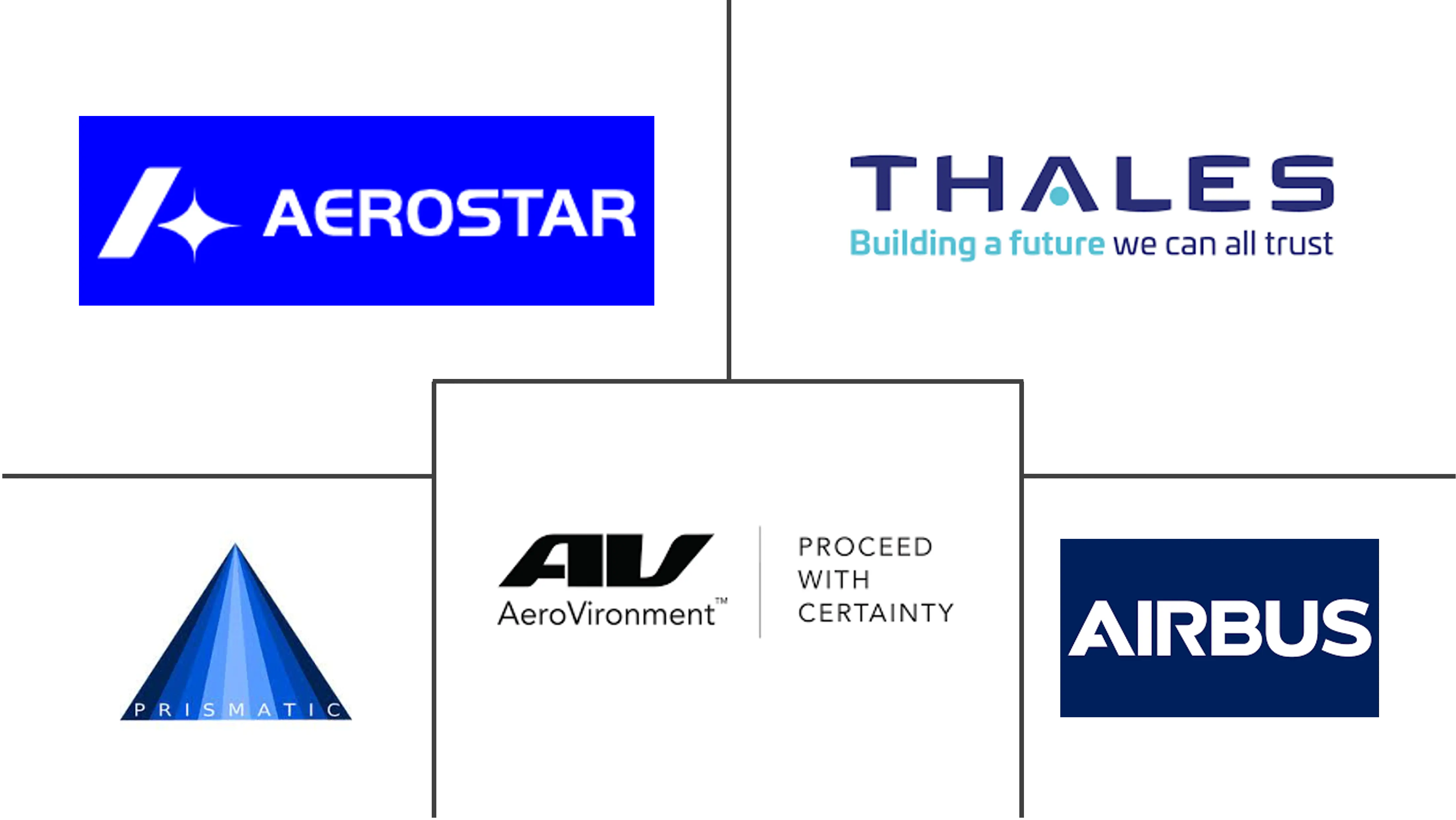
*Disclaimer: Major Players sorted in no particular order |
High Altitude Pseudo Satellites Market Analysis
The High Altitude Pseudo Satellites Market size is estimated at USD 0.84 billion in 2024, and is expected to reach USD 1.29 billion by 2029, growing at a CAGR of 9.08% during the forecast period (2024-2029).
High-altitude pseudo-satellite (HAPS) blends the strengths of terrestrial and satellite communication systems. They overcome the limitations of traditional satellites, offering voice, video, and broadband services with better cost-to-performance ratios. Telecommunication providers increasingly turn to HAPS to meet the rising demand for high-capacity wireless services, especially in remote areas lacking robust ground-based networks.
While HAPS is cost-effective to build and operate, its endurance poses a challenge. Platforms like unmanned aerial vehicles (UAVs) are integrating electric propulsion systems to address this. This shift has spurred significant R&D investments in developing robust battery systems and high-charge density solar panels, enhancing the platforms' endurance and making them more appealing to telecom and emergency service providers.
As an emerging technology, high-altitude pseudo-satellites are poised to revolutionize the remote sensing and surveillance market. They present both disruptive and complementary applications compared to services provided by satellites, terrestrial infrastructures, and remotely piloted aircraft systems (RPAS), all at a notably lower cost.
Operating in the stratosphere, where air density is just 7% of that at sea level, these pseudo-satellites face unique challenges. For instance, to sustain flight, fixed-wing UAVs may need larger wing areas, while airships or balloons might require increased volume. Designers must opt for advanced, lightweight materials to meet weight specifications. Google's Project Loon, for example, explores materials like metalized mylar, biaxially-oriented polyethylene terephthalate (BoPET), and flexible chloroprene for its stratospheric balloons. Similarly, Facebook utilized T700 carbon fiber in Aquila's prototype. As HAPS models evolve, the industry is set to focus more on lightweight material R&D in the coming years.
High Altitude Pseudo Satellites Market Trends
The Airships Segment to Dominate Market Share During the Forecast Period
In 2023, the airship segment took the lead, capturing the largest market share. High-altitude platform systems (HAPS) are proving indispensable for communication and surveillance, capitalizing on the stratosphere's altitude of 20 km. High-altitude platform systems, blending airship flexibility with satellite-like endurance, exhibit remarkable adaptability in their missions. Yet, challenges persist with unmanned balloons, particularly due to weather dependencies and limited energy sources. Airships, with their superior payload capacity, are emerging as the preferred platform, enabling them to cover vast and traditionally hard-to-reach areas swiftly.
In addition to their payload capabilities, airships offer cost-effectiveness, operational flexibility, and rapid deployment. These airships are often customized to carry specialized equipment, ranging from communication gear to advanced sensors and cameras. For instance, in March 2023, THALES clinched a substantial USD 46 million contract for the EuroHAPS High-Altitude Platform Systems initiative. This collaborative effort, involving eleven European nations, is focused on developing an advanced stratospheric platform. Thales' contribution, the solar-powered Stratobus, is specifically engineered for extended missions with substantial payloads. Key partners in the EuroHAPS project include CIRA and Elettronica from Italy, industry leaders like Leonardo, ONERA, and CEA from France, INTA from Spain, and ESG with TAO from Germany.
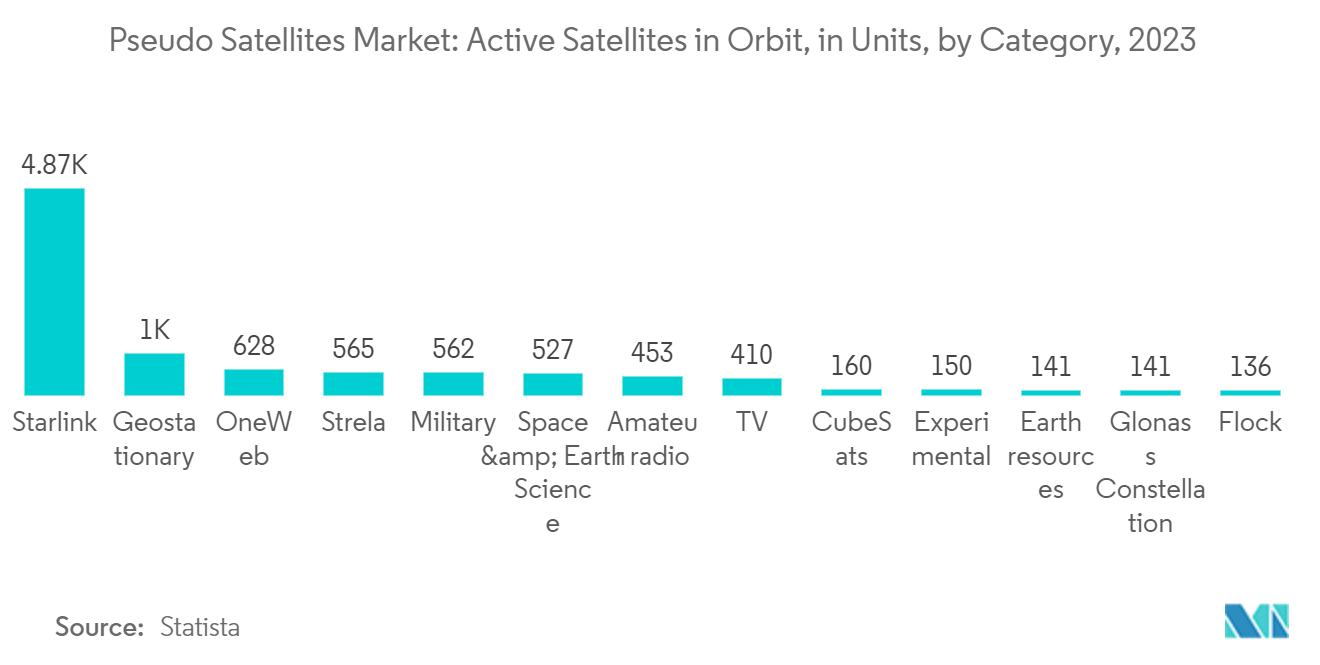
Asia-Pacific to Lead the Market During the Forecast Period
High-altitude pseudo-satellites are gaining traction in Asia-Pacific, particularly in developing countries where traditional infrastructure is lacking, especially in remote areas. These platforms, which can linger in the stratosphere for 3-5 years and cover around 500 km², are proving pivotal in industries ranging from search and rescue to precision agriculture. Notably, India, among other governments, is authorizing pre-deployment tests to evaluate the feasibility of HAPS systems. These platforms provide cost-effective broadband services and a long-term solution for extending broadband access to both fixed and mobile users.
India's National Aerospace Laboratories (NAL) made a significant stride in March 2023 by unveiling the nation's first HAPS. This system is primarily designed for communication applications such as wireless access and emergency services. It shows promise in enhancing border security, combating smuggling, and aiding in pollution monitoring and local development assessments. The agency spearheading the project has set a goal of achieving a fully operational version within the next three years.
Underlining the collaborative ethos in the industry, in January 2022, Sky Perfect JSAT, NTT, DOCOMO, and Airbus teamed up to explore HAPS-based connectivity services with a vision to bolster the broader space-based wireless connectivity ecosystem. NTT and SKY Perfect JSAT's collaboration even extended to an ambitious outer space ICT infrastructure project, leading to the creation of a comprehensive space-integrated computing network. With major players like these investing heavily in R&D and a rising adoption trend across various Asian nations, the forecast period indeed looks bright for the HAPS market in Asia-Pacific.
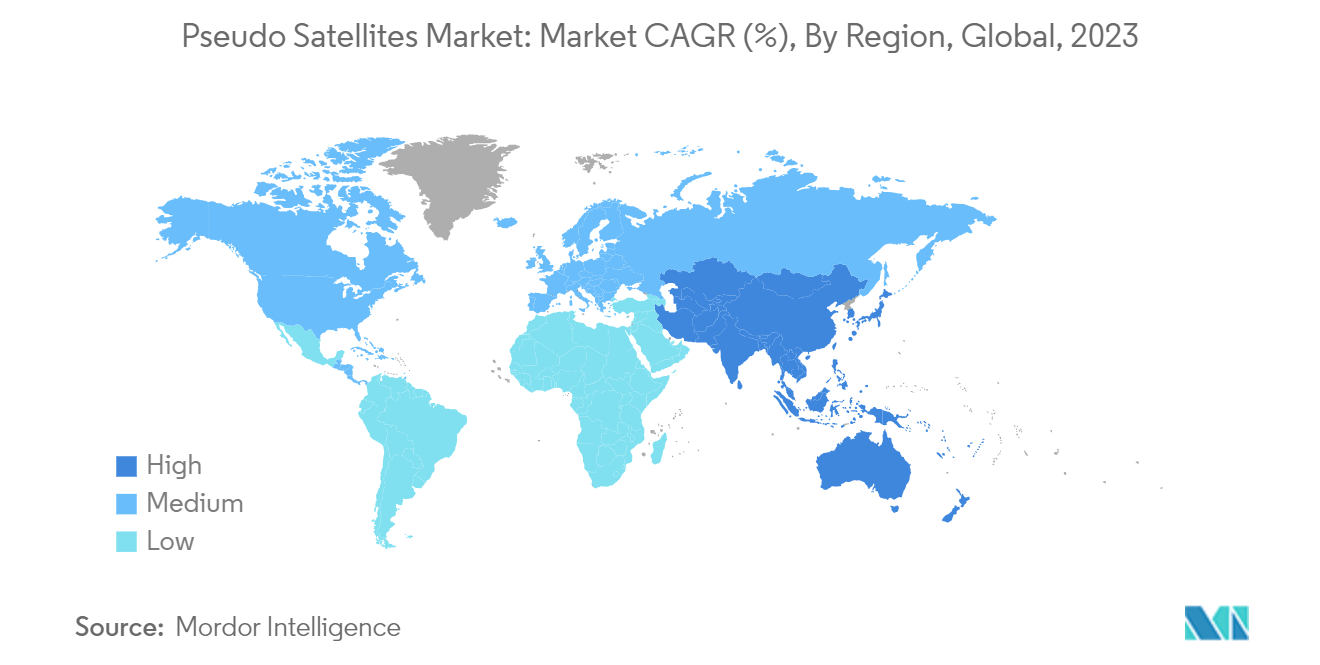
High Altitude Pseudo Satellites Industry Overview
The high-altitude pseudo-satellites market, while semi-consolidated, remains fiercely competitive, with key players vying for market dominance. Challenges such as spectrum management, limited endurance of HAPS, and project cancellations are poised to hinder market growth. Leading companies differentiate themselves through their manufacturing prowess, global reach, diverse product portfolios, robust R&D, and loyal clientele. Notable players include AeroVironment Inc., Airbus SE, Aerostar LLC, Prismatic (BAE Systems PLC), and THALES, who primarily compete on technology and integration capabilities within specific price brackets.
With a projected rise in high-altitude platform procurement, the market is set for growth, presenting an opportune moment for product launches. While the threat of new entrants is moderate, the market's competitive landscape is expected to escalate, driven by a surge in product extensions and technological advancements. In February 2022, India's Ministry of Defence (MoD) partnered with aerospace startup NewSpace under the Innovations for Defence Excellence (iDEX) program. This collaboration, endorsed by the Indian Army, will also involve Hindustan Aeronautics Limited (HAL) as the lead in prototype development.
High Altitude Pseudo Satellites Market Leaders
-
AeroVironment, Inc.
-
Prismatic (BAE Systems plc)
-
THALES
-
Airbus SE
-
Aerostar LLC
*Disclaimer: Major Players sorted in no particular order
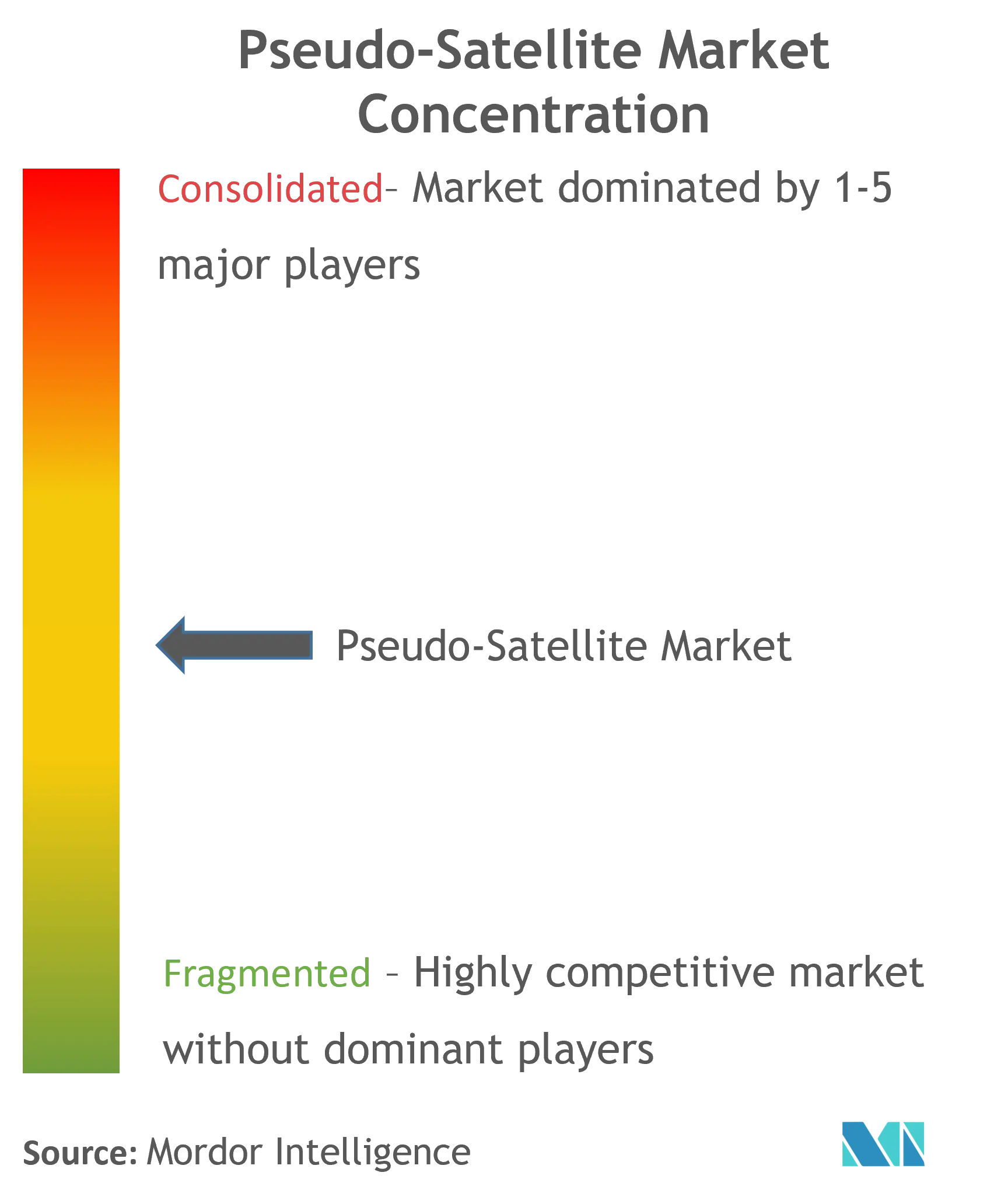
High Altitude Pseudo Satellites Market News
July 2023: BAE Systems PLC reached a significant milestone with the launch of its solar-powered drone, PHASA-35, into the stratosphere, surpassing an altitude of 66,000 ft (20,000 m). This recent test, sponsored by the US Army Space and Missile Defense Command Technical Center, underscored PHASA-35's potential. The high-altitude pseudo-satellite uncrewed aerial system (UAS) is engineered for a year-long operation, providing a persistent presence above weather systems and air traffic, effectively serving as a pseudo-satellite.
July 2023: Mira Aerospace successfully tested its latest high-altitude pseudo-satellite platform. The ApusDuo UAS, carrying a 3.6 kg payload, reached a height of 16,686 m during its 10.5-hour flight. This HAPS features a 15 m (49.2 ft) wingspan and can take off with a maximum weight of 95 lb (43 kg).
High-Altitude Pseudo Satellites (HAPS) Market Report - Table of Contents
1. INTRODUCTION
- 1.1 Study Assumptions
- 1.2 Scope of the Study
2. RESEARCH METHODOLOGY
3. EXECUTIVE SUMMARY
4. MARKET DYNAMICS
- 4.1 Market Overview
- 4.2 Market Drivers
- 4.3 Market Restraints
-
4.4 Industry Attractiveness - Porter's Five Forces Analysis
- 4.4.1 Bargaining Power of Suppliers
- 4.4.2 Bargaining Power of Buyers/Consumers
- 4.4.3 Threat of New Entrants
- 4.4.4 Threat of Substitute Products
- 4.4.5 Intensity of Competitive Rivalry
5. MARKET SEGMENTATION
-
5.1 Technology
- 5.1.1 Stratospheric Balloons
- 5.1.2 Airships
- 5.1.3 UAVs
-
5.2 Geography
- 5.2.1 North America
- 5.2.1.1 United States
- 5.2.1.2 Canada
- 5.2.2 Europe
- 5.2.2.1 United Kingdom
- 5.2.2.2 France
- 5.2.2.3 Germany
- 5.2.2.4 Italy
- 5.2.2.5 Rest of Europe
- 5.2.3 Asia-Pacific
- 5.2.3.1 China
- 5.2.3.2 India
- 5.2.3.3 Japan
- 5.2.3.4 South Korea
- 5.2.3.5 Rest of Asia-Pacific
- 5.2.4 Latin America
- 5.2.4.1 Brazil
- 5.2.4.2 Mexico
- 5.2.5 Middle East and Africa
- 5.2.5.1 Saudi Arabia
- 5.2.5.2 United Arab Emirates
- 5.2.5.3 Turkey
- 5.2.5.4 South Africa
- 5.2.5.5 Rest of Middle East and Africa
6. COMPETITIVE LANDSCAPE
- 6.1 Vendor Market Share
-
6.2 Company Profiles
- 6.2.1 AeroVironment Inc.
- 6.2.2 Airbus SE
- 6.2.3 Prismatic (BAE Systems PLC)
- 6.2.4 THALES
- 6.2.5 Aerostar LLC
- 6.2.6 Mira Aerospace Ltd
- 6.2.7 Sceye Inc.
- 6.2.8 STRATOSYST sro
- 6.2.9 Involve Group SRL
- *List Not Exhaustive
7. MARKET OPPORTUNITIES AND FUTURE TRENDS
** Subject To AvailablityHigh Altitude Pseudo Satellites Industry Segmentation
Pseudo-satellites, potential substitutes for traditional satellites, operate at stratospheric altitudes, typically between 10 to 30 miles above sea level. These platforms are geostationary, leading to localized service provision. The market study focuses on the R&D of various pseudo-satellite platforms, production by market players, and deployments within the study period. The estimates exclude sales and replacements of individual pseudo-satellite components.
The high-altitude pseudo-satellites market is segmented by technology and geography. By technology, the market is segmented into stratospheric balloons, airships, and UAVs. The report covers the market sizes and forecasts in major countries across different regions. For each segment, the market sizes and forecasts are provided in terms of value (USD).
| Technology | Stratospheric Balloons | |
| Airships | ||
| UAVs | ||
| Geography | North America | United States |
| Canada | ||
| Geography | Europe | United Kingdom |
| France | ||
| Germany | ||
| Italy | ||
| Rest of Europe | ||
| Geography | Asia-Pacific | China |
| India | ||
| Japan | ||
| South Korea | ||
| Rest of Asia-Pacific | ||
| Geography | Latin America | Brazil |
| Mexico | ||
| Geography | Middle East and Africa | Saudi Arabia |
| United Arab Emirates | ||
| Turkey | ||
| South Africa | ||
| Rest of Middle East and Africa |
High-Altitude Pseudo Satellites (HAPS) Market Research FAQs
How big is the High Altitude Pseudo Satellites Market?
The High Altitude Pseudo Satellites Market size is expected to reach USD 0.84 billion in 2024 and grow at a CAGR of 9.08% to reach USD 1.29 billion by 2029.
What is the current High Altitude Pseudo Satellites Market size?
In 2024, the High Altitude Pseudo Satellites Market size is expected to reach USD 0.84 billion.
Who are the key players in High Altitude Pseudo Satellites Market?
AeroVironment, Inc., Prismatic (BAE Systems plc), THALES, Airbus SE and Aerostar LLC are the major companies operating in the High Altitude Pseudo Satellites Market.
Which is the fastest growing region in High Altitude Pseudo Satellites Market?
Asia Pacific is estimated to grow at the highest CAGR over the forecast period (2024-2029).
Which region has the biggest share in High Altitude Pseudo Satellites Market?
In 2024, the Asia Pacific accounts for the largest market share in High Altitude Pseudo Satellites Market.
What years does this High Altitude Pseudo Satellites Market cover, and what was the market size in 2023?
In 2023, the High Altitude Pseudo Satellites Market size was estimated at USD 0.76 billion. The report covers the High Altitude Pseudo Satellites Market historical market size for years: 2019, 2020, 2021, 2022 and 2023. The report also forecasts the High Altitude Pseudo Satellites Market size for years: 2024, 2025, 2026, 2027, 2028 and 2029.
Pseudo-Satellite Industry Report
Statistics for the 2024 Pseudo-Satellite market share, size and revenue growth rate, created by Mordor Intelligence™ Industry Reports. Pseudo-Satellite analysis includes a market forecast outlook to 2029 and historical overview. Get a sample of this industry analysis as a free report PDF download.



